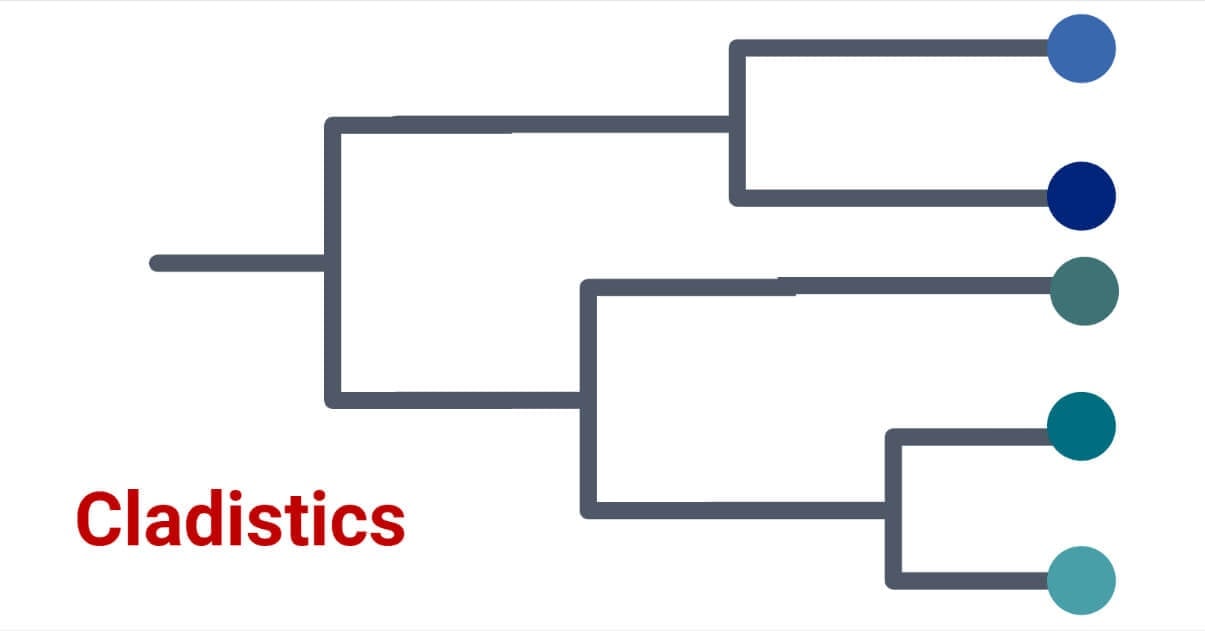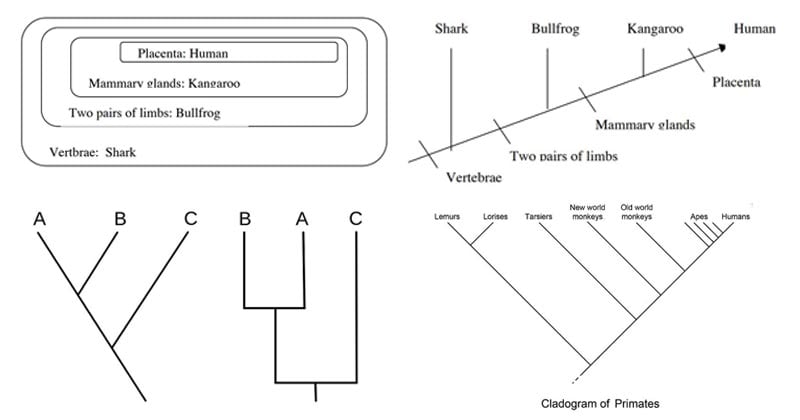Cladistics is a method to classify organisms based on their evolutionary history or relationships. It describes the sequence of the branching of ancestral lines.
- Evolutionary relations between organisms are also termed phylogeny.
- Cladistics is also called phylogenetic systematics or phylogenetic taxonomy.
- Cladistics is one of the widely used methods.
- This method is derived from the work of Willi Hennig (a German Entomologist).

Interesting Science Videos
What are Clades?
Cladistics is used to determine the clades. Clades are particle groups of organisms that have a common ancestry. Clades are also termed monophyletic groups.
Clades can only be determined as they have a single common ancestor, whereas other groups, such as polyphyletic and paraphyletic groups, cannot be identified with cladistics.
Clades include, as a whole, all the descendants along with their one common ancestor.
Some Important Terms
What are paraphyletic and polyphyletic groups?
Paraphyletic groups include the most recent ancestor with some descendants; whereas, polyphyletic groups include no ancestors i.e. just descendants are considered.
Synapomorphy vs. Symplesiomorphy
Synapomorphy includes those characters that are shared and derived (those characters may or may not be present in the original or initial ancestors); whereas, symplesiomorphy includes the shared ancestral characters i.e., the characters derived from the initial ancestors. These are the types of homology or divergent evolution.
Homoplasy
It includes organisms with those characters which are similar, but the organisms have uncommon ancestors, as in the case of convergent evolution.
What is a Cladogram?
A cladogram is a diagrammatic representation of the organisms showing how they are arranged as clades based on their point of diversion from a common ancestor and derived or shared characters gradually in the evolution.
In this, patterns of relatedness of different characters are illustrated.
It is simply a phenogram with evolutionary relations included as well. In a cladogram, the time scale is not used as done in a phenogram based on the length of the internode.
The points are shown to be the ancestors from where the branches originate and are called nodes, whereas the gap or area between two nodes is called the internode.
The taxa that have one common ancestor are called sister taxa.

Steps Employed in Cladistics
- At first, the characters being studied are identified as primitive and advanced/derived.
- After the identification of characters, a cladogram is prepared.
- The outgroup is determined after the formation of the cladogram. Outgroup includes the organism that diverged early from the ancestor and has a different character than other descendants, which have other common characteristics and are called ingroup.
- Based on the determination of outgroup and ingroup, we conclude how many different groups are being formed and to which group they belong.
Cladistics include three important assumptions:
- Alteration in characters of the lineages happens with time.
- Different groups of organisms have common ancestry through the various descendants derived from that single common ancestor.
- There is a fork or divergence pattern of lineage division.
Cladistics vs. Phenetics
| Cladistics | Phenetics |
| It includes the evolutionary history or relations of organisms to classify them. | It does not include evolutionary features but only the structure and morphology as the main components of classification. |
| The diagrammatic illustration is called a cladogram or phylogram, or phylogenetic tree. | The diagrammatic illustration is called a phenogram. |
| It is highly preferred due to its higher accuracy. | It is less preferred. |
| In cladograms, the time scale is not based on the branch length. | In phenograms, evolutionary time is directly proportional to the branch length of the phenogram. |
References
- Randall S. (2000) Biological Systematics: Principles and Applications. Cornell University Press. Pg. 7
- Ross R.M. Allmon W.D. (1990) Causes of Evolution: A Palaeontological Perspective. University of Chicago Press. Pg. 133
- Platnick N.I. (1979) Philosophy and Transformation of Cladistics. Systematic Zoology 28. Pg. 537-546.
- Cladistics. Retrieved from: https://ucmp.berkeley.edu/clad/clad1.html. Retrieved on: 11/24/2022.
